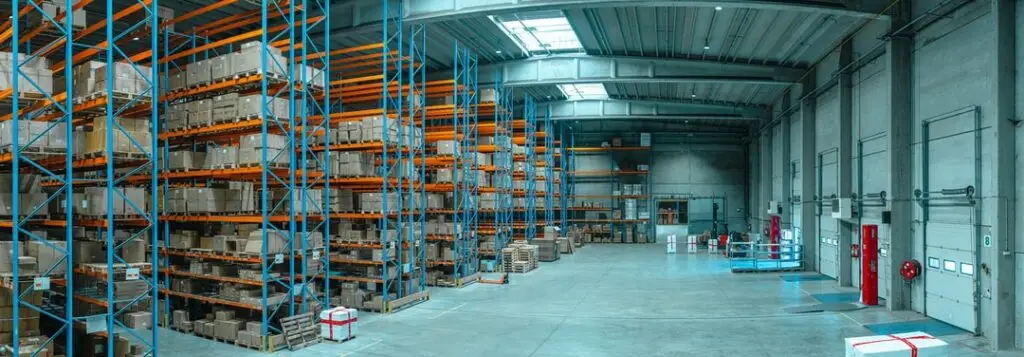Summer is approaching, and with it comes eager shoppers looking for warm-weather clothing at your store. You’ve stocked up on a few items that were hot sellers last year. The problem? They don’t seem to be selling so well. It’s been three weeks, and you’ve managed to turn over just 5% of your inventory. That’s a far cry from the 20% you expected.
If the low sales continue, you may be forced to sell items at a steep discount. You wonder where your merchandise planning efforts went wrong and how to proceed.
Why Is Merchandise Planning Important?
Inventory is the heart and soul of most retail stores. Without it, a retailer doesn’t have products to sell to customers. But there’s an entire art that goes into selecting the ideal product mix and optimal inventory levels, which forms the basis for merchandise planning.
An effective merchandise planning strategy maximizes revenues while minimizing the risk of overstock or stockouts. It holds the key to solid profits for retailers.
Merchandise planning that goes awry can wreak havoc on retailers and severely undercut the bottom line. For example, if you invest too much in products that don’t sell, you might have to reduce prices to recover your investment. On the other hand, ordering too little inventory can lead to unavailable products and customer complaints.
Key Components of Merchandise Planning
These days, retailers face stiff competition. Consumers have a breadth of shopping options, from ecommerce giants to global enterprises that establish a local presence. A store without a solid merchandise planning framework in place will find it harder to stay relevant. So, what are the factors that go into a merchandise planning strategy?

Market Research
How do you know which products customers want and what they’re willing to pay for them? You’ll find out through market research.
Market research uncovers hidden opportunities for retailers, such as items that customers need but aren’t readily available at other stores. Market research will also give you insights into how much to charge and how much demand to expect.
You can conduct market research using data you already have, such as historical sales and website analytics. Understanding your competitors’ offerings and market trends can also inform your analysis.
Assortment Planning
Once you narrow down what customers want, you can decide on your product assortment. This is the range of products you’ll sell, which is essential in assortment planning.
A product mix has several dimensions:
- Width: The number of product lines available.
- Length: The number of items in each product line.
- Depth: How many variations of a product are available.
For example, say you run a women’s clothing store. You might sell shirts, pants, and sweaters. That’s the width of your product mix. If you offer five styles of pants, it represents length. The depth of your product mix is the number of different colors available for each pair of pants.
Inventory Management
How much of each product should you keep on hand? You want enough to fulfill customer demand but not so much that you end up with excess inventory.
In merchandise planning, you’ll forecast demand based on historical data and consumer trends. The results tell you how much of each product to stock without overinvesting in inventory.
What Does Merchandise Planning Involve?
Retailers use several tools to flesh out a merchandise planning strategy. These tools help identify price points, balance inventory counts, and optimize spend.
Sales and Demand Forecasting
A forecast predicts a customer’s reaction to the products available from a retailer. It uses a mix of historical sales data, market trends, and consumer behavior patterns to estimate revenues and product demand. External factors, such as general economic conditions, may also play a part in the forecast.
Forecasts are only as accurate as the data that rolls into them. Their reliability tends to decline over the long term. To see the most benefits, you’ll want to regularly update forecasts as new data comes in and tweak your merchandise planning activities accordingly.
Pricing Strategies
There are multiple approaches to pricing. Some retailers use a cost-plus strategy and charge a fixed percentage on top of each product. Or, you might try to undercut competitors with low prices and slowly increase them over time. Others set prices in line with current market conditions.
Whatever your strategy, factor it into merchandise planning. Use sales forecasting to see how price changes might influence customer satisfaction and revenues. The right price is the one that brings in the most profits without sacrificing customer demand.
As an example, say you’re considering two pricing options for a coffee pot. Your cost basis is $50, and you’re unsure whether to sell it for $55 or $65. A forecast shows you could sell 100 coffee pots at $55. Demand drops to 60 coffee pots at the $65 price point.
While you’ll sell fewer coffee pots for $65, you’ll actually earn more profits — $900 versus $500 according to your forecast. So, you’d want to go with the $65 price point.
Space and Inventory Optimization
There is only a certain amount of space available in a retail store or warehouse. Space constraints impact merchandise planning because inventory can only be stored up to its maximum capacity.
Consider expected turnover rates for each product, and plan accordingly. For instance, if you forecast 100 sales of Item A in one week and 50 of Product B, then you’d want to match your inventory investments to those numbers. Product size is also an issue — bigger products will take up more space. Try to find a balanced mix of inventory that accommodates each item’s dimensions.
Financial Planning
Most retailers don’t have unlimited funds to buy inventory. Evaluate how much money you’re able to invest in products for each sales cycle. Keep enough inventory on hand to meet your spending requirements. The goal is to maintain a nice cycle of free cash flow available to cover ongoing inventory purchases.
Challenges in the Merchandise Planning Process
You may face a few hurdles when implementing a retail merchandise planning strategy. Here’s how to overcome them.
Balancing Online and Offline Channels
Many retailers maintain a physical and digital presence. This can make inventory management even more difficult since you may have orders coming in from all over the world, not just your shop.
If you sell online and offline, closely monitor your digital sales closely. Consider integrating your inventory tracking into one platform. That way, you can easily track turnover and product availability.
Understanding Consumer Preferences
Did a product you thought would be a hit turn out to be a miss? It sounds like a discrepancy between market research and customer expectations. If you notice a significant deviation from expected sales, pinpoint the reason. The solution may not be removing the product; instead, it could be as simple as adjusting the price or adding a new product variation.
Managing Seasonality
Peaks and dips in sales patterns are common among retailers. Factor any expected fluctuations into demand forecasts so you don’t understock or overstock inventory. An inventory management platform that offers real-time product counts can alert you when it’s time to reorder.
Merchandise Planning Software and Technology
There’s a lot of research and analysis that goes into merchandise planning — but what if you had a platform that offered clear insights to help you streamline inventory planning and forecast consumer demand?
GAINS is that platform. Our AI-powered software solution provides clear visibility into inventory and demand forecasting. With us, you can optimize merchandise planning for online and offline channels. Interested in learning more? See how we’re driving specialty retailer success for an Oceania company with more than 300 stores and 10,000 products. Or, reach out today to find out how we can optimize merchandise planning for your company.



